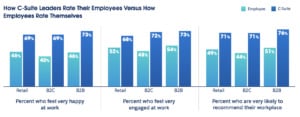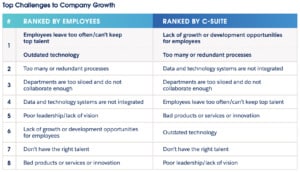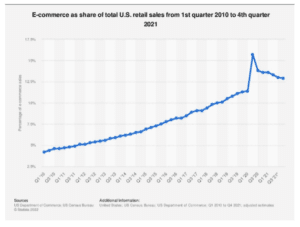A positive employee experience drives revenue
24/03/2023 | by Kris Moyse

The primary responsibility for delivering exceptional customer experience (CX) lies with front-line sales staff. But they can only succeed if they have access to best-practice tools and resources. When staff are equipped to perform, their positive experience in the workplace (EX) boosts CX and improves business performance.
Traditionally, HR has driven EX through remuneration and benefits policies. But this narrow approach overlooks other key factors that affect EX. A recent study by Harvard Business Review identified five essential elements that empower staff to deliver great CX: seamless technology, recognition, alignment, C-suite accountability, and trust.
“The results were striking. Not only were we able to establish a clear link between employees and revenue, but the impact was substantial. In fact, if an average store could move from the bottom quartile to the top quartile in each of the employee experience metrics we studied, they would increase their revenue by more than 50%, and profits by nearly as much.” – The Value of Employee Experience
More importantly, improving EX delivered a solid return. Moving a store from the bottom to the top quartile in each EX factor led to increased revenues with a 150% ROI.
Drilling deeper into the reports, we find key challenges – especially for retail shop floor employees:
-
CX takes priority, as it has more visible links to results
-
There’s a disconnect between C-suite and employee views on performance
-
The pandemic slowed in-store investment
-
Visibility gaps still exist
Most retail businesses embed a focus on customer satisfaction. They invest in systems to capture CX data and monitor it closely at executive level. CX ranks high on the investment priority list—often at the expense of EX.
However, the Harvard Business Review report shows that EX plays a critical but underappreciated role in improving CX. Without investment in EX, businesses miss major opportunities to grow revenue and profit. In a typical store, investing in EX alongside CX led to a 50% greater sales uplift than investing in CX alone.
“Executives sweat (a bit) when they think about pouring the same level of energy, intention, and resources into designing employee experiences as they do in crafting outstanding customer experiences. A quality employee experience is table stakes. Interconnected, seamless, and meaningful experiences that unlock employee energy and agency are essential for transformative customer experiences that win hearts, minds, and wallets to drive growth.” – Katherine von Jan, Chief Strategy Officer, Salesforce Innovation
Perception Gap
There is a big difference between C-suite and employee perceptions of several critical EX factors including employee happiness, the level of employee engagement and the degree to which employees would recommend their workplace.

However, the greatest difference was seen in perceptions of the availability of seamless technology… information systems that work together to increase productivity and reduce the effort required to complete tasks.
Only 17% of customer-facing employees feel they are provided with seamless technology, where-as 52% of the C-Suite believe they are
Recent Salesforce research shows that whilst management and back-office functions may have effective technology, staff at the coal-face in a typical retail store are using 14 different apps to run day-to-day operations.
This mismatch in expectations increases the likelihood of staff churn, causing loss of valuable experience and intellectual property. The cost implications of losing talent and employee turnover are significant. Studies have shown that replacing an employee can cost up to 200% of their salary.

Source: Zeno DXI/Salesforce – The Experience Advantage; Enrich, 2021; Gallup, 2019; Bersin by Deloitte, 2013
COVID
The COVID pandemic generated a great deal of uncertainty around the future of traditional retail, resulting in a substantial reduction in store investment. For more than two years, retail held back investment in ‘bricks and mortar,’ but accelerated investment in online technologies, expecting the rise of digital to continue and accelerate. Post pandemic, there has been a return to pre-pandemic shopping patterns and trends, with people returning to stores. This has now increased the urgency for stores to invest in their people and supporting technology.

Source: Statista, 2022
“…the demand from consumers for physical experiences will force retailers to offer immersive, technology filled stores as standard” – Deloitte UK, Retail Trends 2023
SUMMARY
The Harvard Business Review research clearly shows that improving employee experience (EX) directly impacts customer experience (CX), resulting in stronger business performance.
Access to seamless technology – a key EX performance metric – was shown to be an area in which frontline staff are lagging compared with their C-suite colleagues. Reducing the number of apps typically required for day-to-day retail operation would go a long way to improving this EX factor.
Consolidating the current average of 14 apps down to 2 or 3 would contribute dramatically to improved EX, resulting in increased revenue/profit, lower management costs and better staff retention.
Enhancing EX is a central objective of the Proximity Retail Super-App. Our all-in-one solution gives retail teams the power to excel in their role, and master operational efficiency everyday.